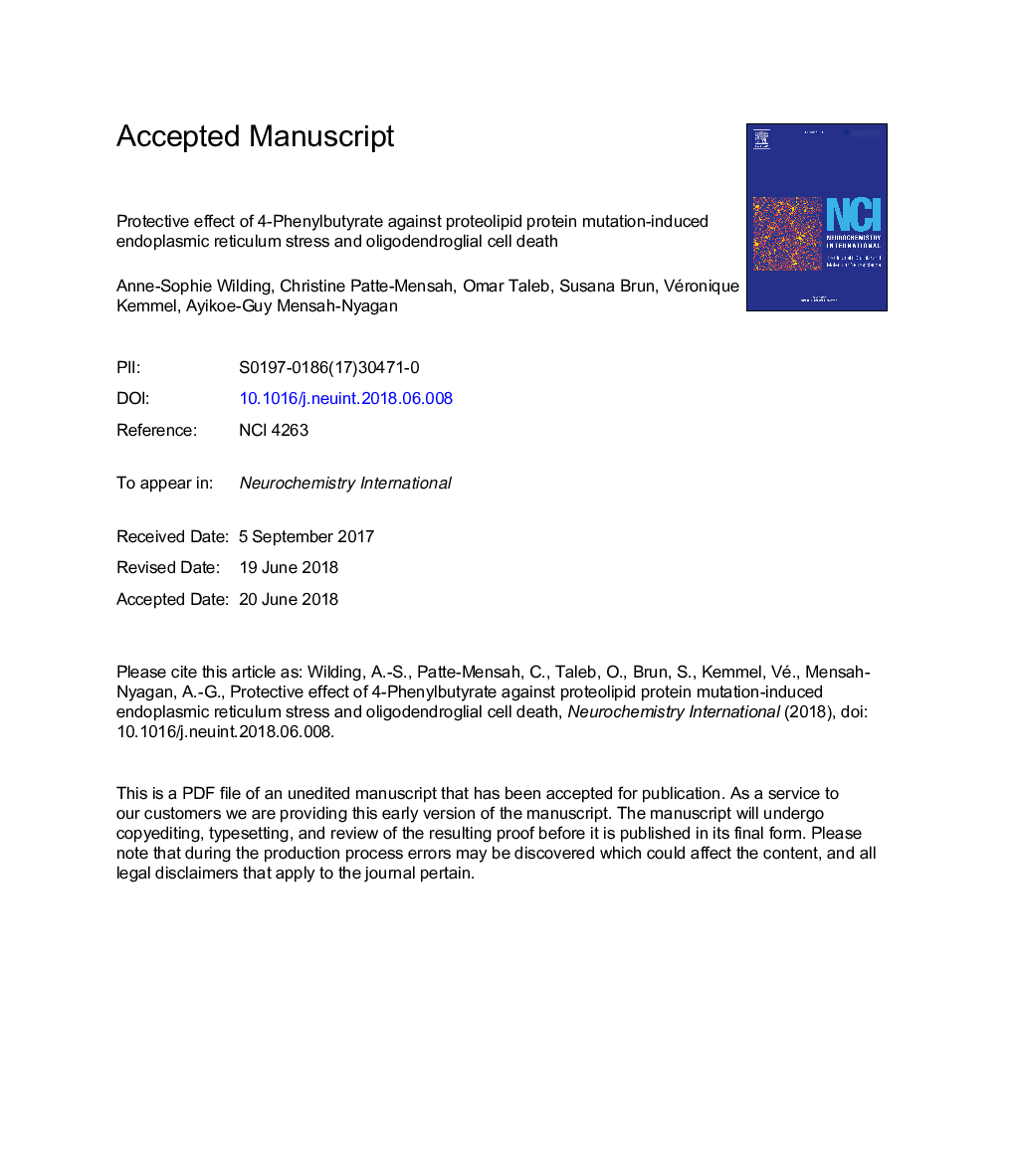| Article ID | Journal | Published Year | Pages | File Type |
|---|---|---|---|---|
| 8478883 | Neurochemistry International | 2018 | 40 Pages |
Abstract
Proteolipid protein (PLP) mutation causes oligodendrocyte degeneration and myelin disorders including Pelizaeus-Merzbacher Disease (PMD). As the pathophysiological mechanisms involved in PMD are poorly known, the development of therapies remains difficult. To elucidate the pathogenic pathways, an immortalized oligodendroglial cell line (158JP) expressing PLP mutation has been generated. Previous investigations revealed that 158JP oligodendrocytes exhibit several abnormalities including aberrant PLP insertion into the plasma membrane, cAMP, plasmalogen and cell cycle deficits. However, further clarifications of abnormal PLP-induced oligodendrocyte degeneration are required in order to identify relevant mechanisms to target for efficient protection against oligodendrocyte death. Because PLP overexpression may lead to its accumulation inside the endoplasmic reticulum (ER) and cause ER-stress, we explored whether ER-stress may pivotally determine 158JP cell survival/death. Viability assays, RT-qPCR, western blot and flow cytometry were combined to compare cell survival, ER-stress and apoptotic markers in 158JP and control (158N) oligodendrocytes. We observed a significant decreased viability/survival of 158JP compared to 158N cells. Consistently, ER-stress markers (BiP, caspase-12) increased in 158JP (+30%) compared to the controls. mRNA and protein ratios of apoptotic modulators (Bax/Bcl2) are higher in 158JP oligodendrocytes which are also more vulnerable than 158N cells to tunicamycin-induced ER-stress. Interestingly, 4-Phenylbutyrate (ER-stress inhibitor), which decreased ER-stress and apoptotic markers in 158JP cells, significantly increased their survival. Our results, which show a direct link between the viability and endogenous levels of ER-stress and apoptotic markers in 158JP cells, also suggest that 4-Phenylbutyrate-based strategy may contribute to develop effective strategies against oligodendrocyte dysfunctions/death and myelin disorders.
Related Topics
Life Sciences
Biochemistry, Genetics and Molecular Biology
Cell Biology
Authors
Anne-Sophie Wilding, Christine Patte-Mensah, Omar Taleb, Susana Brun, Véronique Kemmel, Ayikoe-Guy Mensah-Nyagan,
